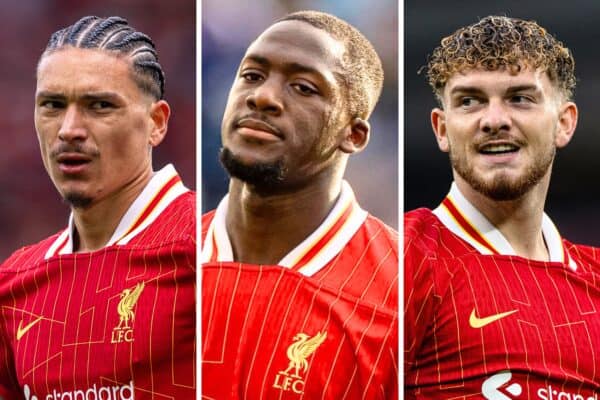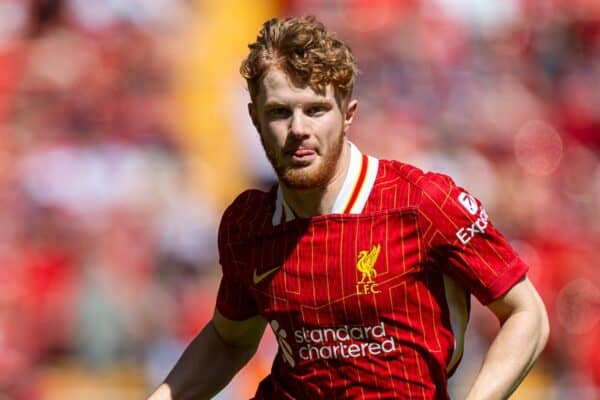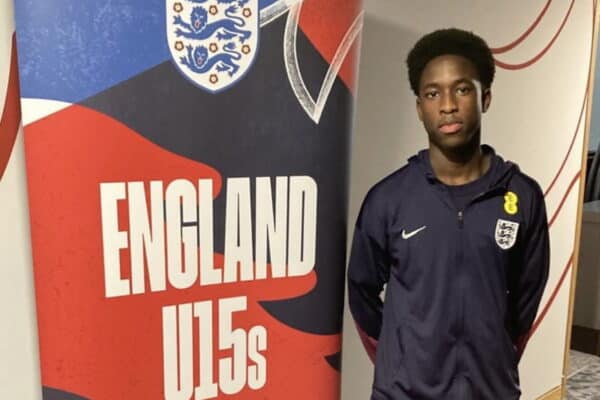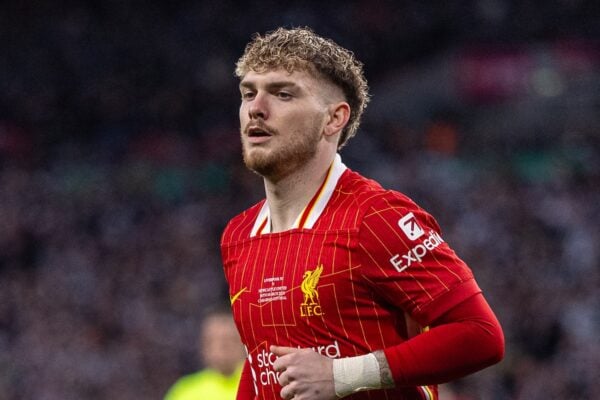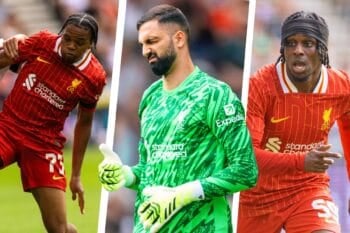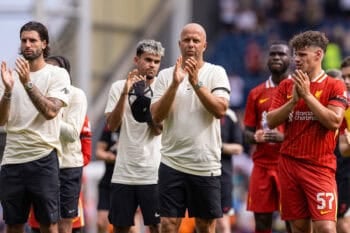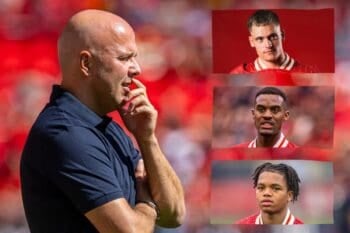Its a rare player who reaches his peak AFTER leaving Anfield, but Jimmy Case was, after all, no ordinary performer. He bade farwell to the Reds at the age of 27, gave 3 and a half years commendable but hardly remarkable service to Brighton, and the bloomed luxuriantly for Southampton in the play makers role denied to him at Anfield by the majesty of Graeme Souness. Was he allowed to leave Merseyside too soon, or was the change as good as a rest? The question will always hang ove the Case career, but should not be allowed to detract from the six seasons of stirring achievements under Bob Paisley.
Jimmy, a ”
500 (yes five hundred quid) capture from non league South Liverpool, made his full debut against QPR in April 1975 in an attacking role wide on the right, but it was not until 7 months later that his explosive talents earned a settled run in the team at the expense of Brian Hall. He marked his new stature with a rousing hat-trick at home to Slask Wroclaw of Poland in the UEFA cup and then, having also scored against Dynamo Dresden in the quarter final, exerted a crucial influence on the home leg of the final against FC Bruges. He had been omitted from the starting line-up in favour of David Fairclough but, with the Reds 2 down, was called on as a substitute for John Toshack and immediately galvanised the side into a 3 goal retaliation. Rampaging ferociously down the flank, Jimmy unsettled the previously calm Belgian defence, creating several clear cut chances and chipping in with the equaliser himself.
Liverpools vibrant, baby faced rookie finished his 1st senior campaign with title and UEFA cup medals and was clearly a prospect of pridigious potential. His value was twofold; in attack his pace thrust and blockbuster shooting offered a savage threat, while in deeper positions his lusty tackling, crisp distribution, and general full blooded vitality were a productive combination. Yet despite such an impressive array of assets, Jimmy’s place in the side during the treble hunting campaign which followed was not a formality. Until the spring of 1977, when he slotted in on the right of Terry McDermott, the two had fought a well-matched battle for the number 8 shirt. Come the run in, Jimmy was on his mettle, playing an enterprising part in the league and european cup triumphs and winning plaudits as the Reds best player in the FA cup final against the Mancs. Though a wembley loser, he had the consolation of scoring the games finest goal, swivelling on the 18 yard line to beat Alex Stephney with a sweetly struck half-volley.
Over the next 3 seasons his name was seldom missing from liverpool’s teamsheet and with Souness, McDermott and Ray Kennedy formed one of the worlds most effective – and attractive – midfield units. But in 1980/81 Jimmy was ousted by the industrious sammy Lee and spent most of his time on the bench, clearly an unacceptable situation for a 27 year old of his calibre.
With no likelihood of a swift recall he was sold to Brighton for ”
350,000, and in his 2nd season with the Seagulls, he had the hugh satisfaction of returning to Anfield to his former team mates out of the FA Cup. When aged 30 he moved to the Dell for a token ”
25,000, Jimmy’s career looked like petering out into nothingness; half a decade, and some 200 matches later he was playing better than ever, maturity having revealed unsuspected depths of craft and insight. As his manager at the time, Chris Nicholl, put it: ‘œIf the game is a language, then Jimmy is undoubtedly a professor’.
Even then he wasnt ready to retire, the Case history encompassing five more clubs until 1995, when a little matter of a suspected broken neck convinced him to step aside. A few days later Jimmy, his fears of serious injury laid to rest, put aside the temptation of a playing comeback but returned to the game for a demanding stint as boss of torubled Brighton.
People’¦I give you, Mr Jimmy Case.
Born: Liverpool 18/05/1954
Games: 236
Goals: 45
Article Copyright (c) Roper 2003





